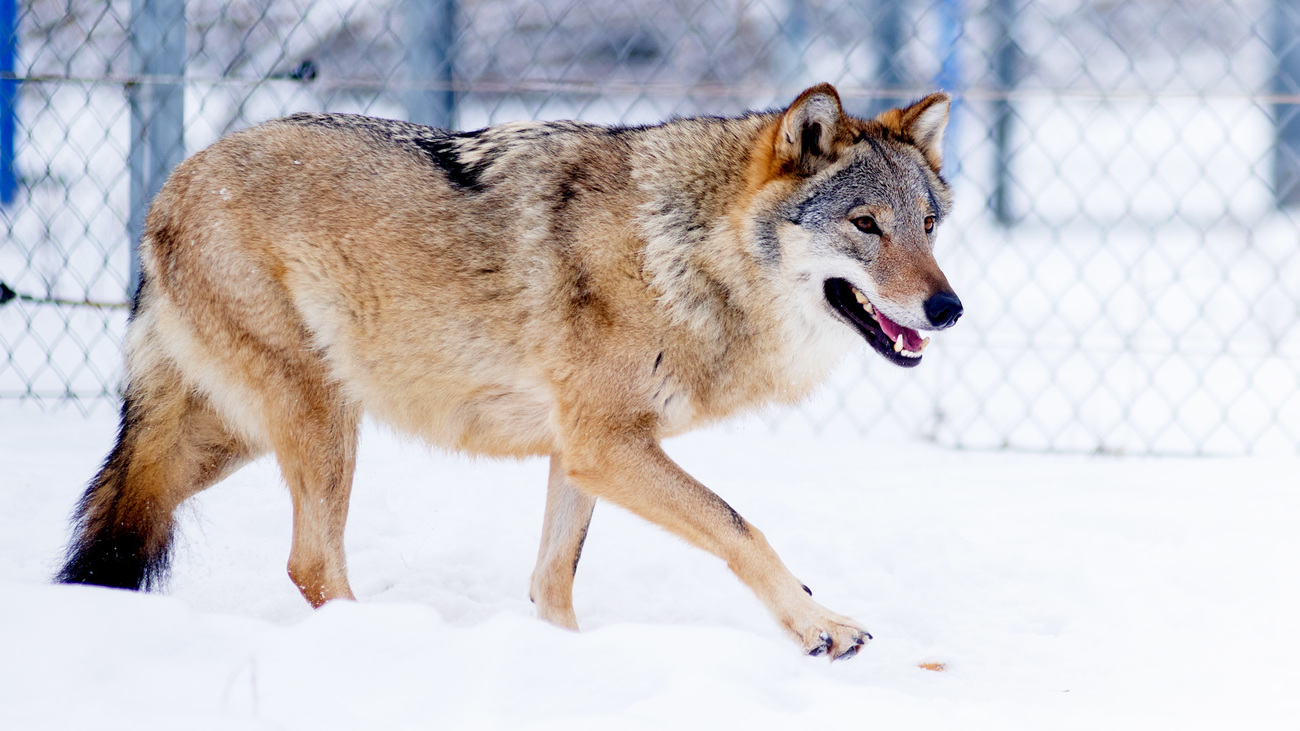Blog
Wildlife crime: terms and definitions
Read moreAnimals with the best hearing in the world
From the largest whales in the ocean to insects that could fit in the palm of your hand, there are many animals around the world with acute senses of hearing. Though mammals are known to have the best hearing in the animal kingdom, some birds, fish, and invertebrates have keen ears, too.
Let’s take a look at 14 animals that have great senses of hearing—some of them may surprise you.

Known for their large ears, it’s not surprising that elephants have great hearing. They are particularly good at detecting low-frequency sounds—they can hear frequencies as low as 17 Hz, while humans can hear as low as 20 Hz. However, their high-frequency hearing is less impressive. They can only hear up to 12,000 Hz frequencies, while humans can hear up to 20,000 Hz. There is a correlation between the size of the space between mammals’ ears and their ability to hear high frequencies. Bats, for example, can hear much higher frequencies because their ears are closer together.
Elephants’ ears are multipurpose—not only are they used for hearing, but they are also important for thermoregulation. Their ears hold large blood vessels, and when blood circulates out from the body and into the ears, it cools down. This cooler blood is then spread through the rest of the elephant’s circulatory system.
The biggest animals in the world also have some of the best hearing. There are two different types of whales—toothed whales, which are hunters, and baleen whales, which are filter feeders—and they hear differently. Toothed whales rely on echolocation to catch their prey. They make high-pitched, ultra-sonic sounds using their noses, which echo back to them. In this way, they can ‘see’ using high-frequency sounds. An example of a toothed whale is the beluga.
Baleen whales can instead emit and hear very low-frequency, infrasonic sounds. These sounds can travel thousands of kilometers—across entire ocean basins. They are used for communication with other whales, not for hunting. An example of a baleen whale is the North Atlantic right whale.
Because they rely on their hearing to survive, ocean noise pollution poses a huge threat to whales. IFAW is working to reduce ocean noise through our Blue Speeds campaign.
Owls have some of the best hearing of all birds. As fierce hunters, owls rely on this sense to locate and catch their prey. At frequencies of 5,000 Hz and higher, their hearing is much more sensitive than other birds’. Barn owls in particular have great ears—they’ve been known to use frequencies of 8,500 Hz to locate their prey—the squeaks of mice and voles.
While birds can’t necessarily hear as wide of a range of sounds as mammals can, they do have better hearing resolution—meaning they hear sounds in greater detail. Barn owls and other birds can also instantly and accurately determine where a sound is coming from, because there is a short time difference between the sound reaching their right ear and their left ear.

Bats can hear some of the highest frequencies out of all mammals. About 70% of all bat species use echolocation, meaning they emit very high-frequency sounds and listen for their echoes to navigate and locate food in the dark. Most bat echolocation sounds extend beyond the range of human hearing, reaching frequencies of up to 200,000 Hz.
With the best hearing in the insect world, moths have even more sensitive ears than bats. Some moth species can hear frequencies as high as 300,000 Hz. The greater wax moth is reported to have the best hearing of all moth species.
Your dog probably has much better hearing than you. Not only can dogs hear sounds at higher frequencies than humans, but they can also more easily differentiate sounds and determine their location of origin. While adult humans typically can’t hear sounds above 20,000 Hz, dogs can detect frequencies as high as 47,000 to 65,000 Hz. Their keen sense of hearing is thanks to their wild ancestors, who needed to hear small animals like mice.
Cats can hear much higher frequencies than humans. While they can only hear sounds as low as 45 Hz (humans’ lower range is about 20 Hz), they can hear sounds as high as 64,000 Hz. Research has shown that cats have greater sensitivity to sound than dogs. Like domesticated dogs, today’s domesticated cats are descendants of fierce predators who relied on sound to hunt mice and other small mammals.
Horses are another domesticated animal renowned for their good hearing. Though their sense isn’t quite as attuned as a dog’s or cat’s, horses can hear frequencies ranging from 55 to 35,000 Hz, so they can still hear a much wider range than humans can. However, horses aren’t good at determining where a sound comes from. This is likely because their vision is good enough that they don’t need to—horses have some of the largest eyes in the animal kingdom.

Like bats, dolphins use echolocation to hunt for prey, and they also rely on complex sounds to identify each other and communicate. They generate very high-pitched pulses and clicks using their foreheads which bounce off objects and echo back to their ears. Dolphins’ hearing range extends from 20 Hz all the way to 150,000 Hz—far beyond the pitches that humans can hear.
Have you ever wondered how pigeons have developed such a keen sense of direction and can always find their way home? The answer may be their hearing. One study found that pigeons could hear extremely low-pitched sounds—infrasound—as low as 0.05 Hz. It’s possible that noises we can’t even hear are what guide pigeons in their journeys—they can rely on ‘sound maps’ in the way we use images.

Wolves may have better hearing than their domestic dog relatives. These canines can hear sounds up to at least 25,000 Hz, but some researchers think their hearing extends up to 85,000 Hz. Wolves can also detect sounds from very far away—they can hear as far as 9.7 kilometers (six miles) away in the forest and 16.1 kilometers (10 miles) away in the open. This keen sense is crucial for their hunting ability.
These fierce predators are sadly targeted by poisoning, traps, and snares in the name of ‘control’. This is because of misconceptions people have about wolves and the human-wildlife conflict we sometimes experience with them. However, there are much more humane methods of preventing conflict and coexisting with wolves.
Rats’ hearing range extends from about 250 Hz to 80,000 Hz, rivaling the hearing capabilities of wolves. Interestingly, though they can hear much higher frequencies than humans, rats’ ears are very similar to humans’ in terms of their anatomy and physiology. Their middle ear mucosa, ossicles, and cochlea resemble those of humans. However, one difference is that humans’ hearing develops faster than rats’, as it develops before birth, whereas rats don’t begin to develop their hearing until they are born.

Do rabbits’ tall ears help them hear better? Wild rabbits have a hearing range that spans from 360 Hz to about 42,000 Hz, meaning they can hear higher—but not lower—frequencies than humans. A rabbit’s large pinna, or external part of the ear, helps them detect faint sounds from quite far away. The pinna funnels sound into the ear canal like a satellite dish. Rather than for hunting prey, these herbivores need keen senses to escape predators before they get too close. Rabbits can also use their ears separately to detect two different sounds at once. Like elephants, they also regulate their body temperature by circulating blood through their large ears.
Due to selective breeding, domestic rabbits often suffer from hearing problems. They are bred to have a ‘cute’ appearance, which often means they suffer the side effects of inbreeding.
Some species of catfish can detect extremely low frequencies—as low as 0.3 Hz. They can also hear up to 6,000 Hz on the high-frequency end. Smaller catfish have better high-frequency hearing, while larger catfish have better low-frequency hearing. Their hearing is much more acute than that of other similar fish. Their keen senses allow them to find prey, escape predators, find mates, and even return to familiar areas of the water after being away for months.
IFAW works around the world to protect and advocate for animals, people, and the planet. Learn how you can take action for animals today.
every problem has a solution, every solution needs support.
The problems we face are urgent, complicated, and resistant to change. Real solutions demand creativity, hard work, and involvement from people like you.
Unfortunately, the browser you use is outdated and does not allow you to display the site correctly. Please install any of the modern browsers, for example:
Google Chrome Firefox Safari